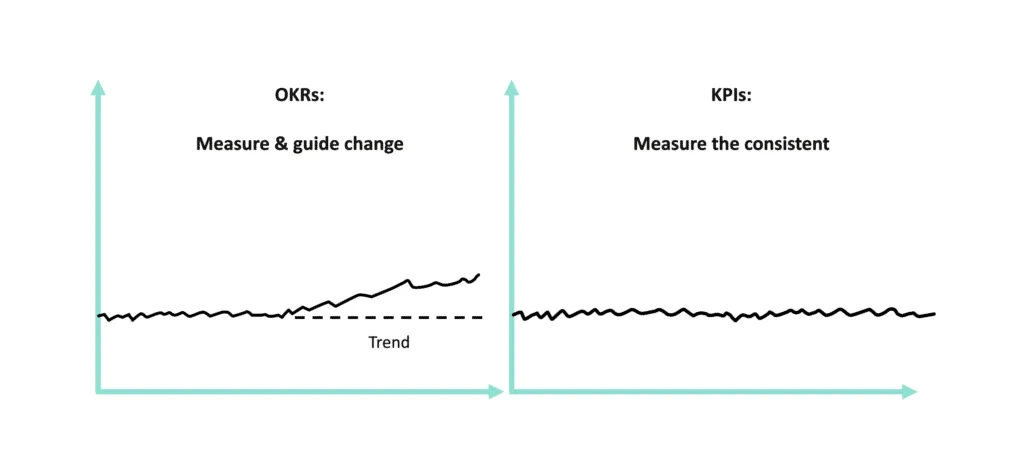KPIs vs OKRs - What’s the Difference and Why it Matters
Understand the difference between KPIs and OKRs—how KPIs measure organizational health and consistency while OKRs drive strategic change—and why leveraging both boosts performance.

It’s important to understand the distinction between KPIs and OKRs.
We’ll dive into the these two organizational metrics as we explore the unique roles of KPIs (Key Performance Indicators) and OKRs (Objective and Key Results).
You’ll learn how KPIs gauge overall organizational health, while OKRs guide the pursuit of specific objectives.
Learn how these metrics differ in frequency, purpose, and their impact on achieving business goals.

Measuring Consistency vs. Guiding Change
KPIs play a crucial role in measuring the overall health and performance of an organization.
They provide valuable insights through metrics such as: – Employee NPS score Monthly Revenue Current Burn Rate.
These indicators help assess various aspects of the organization’s functioning and progress.
On the other hand, OKRs go beyond measuring and monitoring.
They serve as a navigational tool, setting clear direction and guiding organizations towards desired outcomes.
OKRs provide a structured framework that aligns teams, clarifies priorities, and keeps everyone focused on achieving key objectives.

Other Articles
Get the inside scoop on OKRs
Sign up to our newsletter to get OKR tips, tricks, and insights delivered directly to your inbox!




